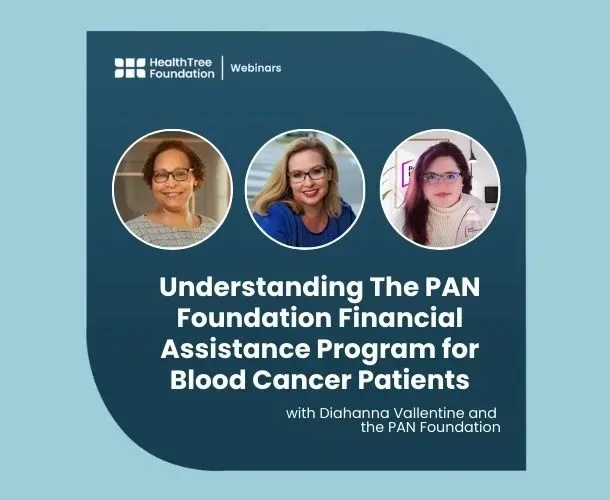IMS 2024: News for High-Risk Multiple Myeloma

Despite major advancements in myeloma care over the past decade, a quarter of newly diagnosed myeloma patients survive less than three years, according to presentations at the International Myeloma Society (IMS) meeting held last week in Rio de Janeiro, Brazil.
While standard-risk multiple myeloma patients are living for decades after their diagnosis, those with high-risk myeloma—including functional high-risk, discussed later—are seeing less favorable outcomes due to the more aggressive nature of high-risk myeloma.
The IMS conference addressed key concerns related to high-risk myeloma, emphasizing the need for clearer definitions, improved genetic testing, better identification of risk factors, and a deeper understanding of functional high-risk myeloma.
How Is the Definition of High-Risk Myeloma Evolving?
The definition and treatment of high-risk multiple myeloma are evolving as researchers gain a deeper understanding of the disease's genetics and behavior. Approximately 20% of newly diagnosed patients are considered "high-risk."
Jill Corre, PharmD, PhD, from the Unit for Genomics in Myeloma in Toulouse, France, presented the International Myeloma Society (IMS)'s new definition of high-risk multiple myeloma, which includes the following criteria:
-
Myeloma with at least 20% of cells showing the genetic characteristic of deletion 17p
-
Myeloma with a TP53 mutation
-
Myeloma with a biallelic deletion of 1p32, i.e. only when both arms of the chromosome are missing
-
Myeloma that has any two of the following intermediate-risk genetic characteristics found together:
-
Translocation t(4;14) or t(4;16)
-
Gain of 1q
-
Monoallelic deletion of 1p32 (where only one chromosome is missing)
These updated criteria highlight the growing understanding of how specific genetic features influence the aggressiveness of multiple myeloma, helping to guide treatment decisions for high-risk patients. It also gives standard criteria that myeloma specialists can reference globally.
Because high-risk multiple myeloma requires more intensive treatment and close monitoring, early and accurate diagnosis is critical. Improving testing and making it widely accessible at all treatment centers is key to identifying high-risk patients early. This will allow for better risk classification and more personalized treatment strategies.
How Can Genetic Testing Be Improved for Myeloma?
As my doctor used to say, “To win the war, you need to understand the enemy.” In the case of multiple myeloma, understanding its genetic makeup is crucial for achieving better outcomes.
Currently, the standard genetic test for myeloma is called the FISH (fluorescence in situ hybridization) test. This test uses a set of probes to identify specific genetic deletions, additions, or translocations (when parts of two chromosomes swap places).
However, if the ordered FISH test doesn’t include a probe for a specific genetic marker—such as a deletion of 17p—it won't detect that mutation simply because the test wasn’t set up to look for it.
Dr. Faith Davies of NYU Langone argues that the current approach to myeloma genetic testing needs to evolve. The FISH test, she explains, is not sufficient for several reasons: it relies heavily on the technician’s skill, and it’s also more expensive than some newer, more comprehensive tests.
Dr. Davies suggests adopting targeted gene panels instead. One such example is the Myeloma Genome Project Panel, developed by genetics expert Dr. Brian Walker, which screens for over 230 gene mutations and translocations and also reports the copy number of each mutation.
This “copy number” is critical, as highlighted by recent high-risk criteria from the IMS. Data from the CoMMpass study revealed that a single missing chromosome in the 17p deletion is not high risk, but losing both copies is. Similarly, having three copies of the 1q chromosome doesn’t categorize the disease as high-risk, but four or more copies do.
Unfortunately, many FISH tests don't report these crucial copy numbers, making it harder for doctors and patients to accurately determine the myeloma’s risk level at diagnosis. Misunderstanding the risk could negatively impact long-term outcomes if the treatment approach is not tailored accordingly.
Other genetic testing methods include DNA-based tests, which require less sample material, and whole genome sequencing, which has significantly decreased in cost in recent years. These alternatives could offer a more accurate and cost-effective way to assess genetic risk in myeloma patients.
Other Risk Factors for High-Risk Myeloma
Chng Wee Joo, Vice President at the National University Hospital in Singapore, highlighted additional factors that could classify certain myeloma cases as high-risk. These factors include:
-
Age or frailty
-
Extramedullary disease (when myeloma occurs outside of the bone marrow and is not attached to the bone)
-
Myeloma found in the central nervous system
-
IGD myeloma type
-
High levels of circulating tumor cells in the blood
-
Patients classified as high-risk using Gene Expression Profiling tests (such as Sky92)
-
Presence of an APOBEC mutation (identified through whole genome sequencing)
-
Chromothripsis, a phenomenon where chromosomes shatter in clusters
-
Patients with more than two high-risk genetic factors
Dr. Joo noted that while these factors are emerging as important, their data is still limited, and much remains to be learned.
What Is Functional High Risk and How Is it Diagnosed and Managed?
Martin Kaiser, MD, of The Royal Marsden in the United Kingdom, explained that some newly diagnosed myeloma patients may have no identifiable genetic abnormalities at diagnosis but still experience poor outcomes after initial treatment. Experts refer to this as “functional high-risk” myeloma.
Functional high-risk myeloma is characterized by the absence of known genetic mutations, yet relapse occurs within two years of starting treatment, even after receiving induction therapy, a stem cell transplant, and maintenance therapy.
Dr. Kaiser raised critical questions about these cases:
-
Was genetic testing actually conducted at diagnosis?
-
Were all appropriate genetic tests used, and did they provide accurate results? (including Gene Expression Profiling or GEP testing)
In a personal review of 135 UK patients classified as functional high-risk, Dr. Kaiser found that all but three were, in fact, high-risk when the proper genetic tests were performed.
He emphasized the importance of using Gene Expression Profiling tests, as they are the most reliable indicators of risk. Additionally, Dr. Kaiser suggested that blood-based testing of circulating plasma cells could provide valuable insights for better risk assessment.
In terms of managing functional high-risk patients, Dr. Kaiser discussed strategies for managing early relapsed myeloma patients, focusing on optimizing treatment intensity, duration, type, toxicity, and adherence. He highlighted the importance of tailoring treatments for these high-risk patients to achieve better outcomes.
As an example, Dr. Kaiser presented data showing that CAR T-cell therapies, including cilta-cel and ide-cel, demonstrated a 12-month progression-free survival in high-risk patients who relapsed after their initial treatment. He suggested that CAR T-cell therapy could be a highly effective option for patients experiencing early relapse, potentially as their second-line treatment.
Dr. Kaiser also emphasized the critical role of maintenance therapy in managing aggressive myeloma. In a study of patients with a 1p deletion, those who received lenalidomide maintenance had a 4-year survival advantage compared to those who did not receive maintenance therapy. He advised against discontinuing lenalidomide maintenance after two years if a patient presents with a single high-risk marker, underscoring the importance of sustained maintenance therapy in these cases.
The Importance of MRD Negativity in Managing High-Risk Myeloma
Katja Weisel, MD, from the University Medical Center Hamburg-Eppendorf, presented additional data on managing high-risk myeloma, emphasizing the importance of achieving MRD (minimal residual disease) negativity.
She explained that reaching MRD negativity, where no signs of myeloma are detected at the deepest level of testing, significantly improves patient outcomes. Dr. Weisel highlighted three key clinical trials with high rates of MRD negativity achieved through intensive and continuous treatment:
-
CONCEPT Trial: This trial used a combination of isatuximab, Kyprolis, Revlimid, and dexamethasone (dex) as induction therapy, followed by a stem cell transplant. Patients then received isatuximab, Kyprolis, Revlimid, and dex as consolidation therapy, with isatuximab, Kyprolis, and Revlimid for maintenance. In this trial, 81.8% of patients achieved MRD negativity, and two-thirds of the patients lived longer than five years.
-
OPTIMUMM Trial: This trial employed daratumumab, cyclophosphamide, Velcade, Revlimid, and dex as induction therapy, followed by a stem cell transplant. Consolidation therapy included daratumumab, Velcade, Revlimid, and dex, with daratumumab and Revlimid used as maintenance. Here, 63% of patients reached MRD negativity, and 84% of those were able to sustain it.
-
IFM 2018-04 Trial: A French study, this trial used daratumumab, Kyprolis, Revlimid, and dex as induction therapy, followed by a stem cell transplant. Patients then received daratumumab, Kyprolis, Revlimid, and dex as consolidation, followed by a second stem cell transplant and daratumumab and Revlimid as maintenance therapy. In this trial, 62% of patients became MRD-negative.
These trials underscore the importance of intensive treatment strategies in helping high-risk myeloma patients achieve MRD negativity and improve their long-term outcomes, including combinations involving four different drugs and continuous maintenance treatment even after a prolonged complete response to the therapies.
Key Takeaways from IMS on High-Risk Myeloma Research
Dr. Faith Davies concluded the IMS conference session on high-risk myeloma research by emphasizing the importance of applying the new IMS guidelines to categorize patients by their risk levels.
She also highlighted the urgent need for more clinical trials specifically designed for high-risk myeloma patients. You can hear more about her thoughts (as well as Dr. Gareth Morgan’s) on the subject here: New Criteria for Defining High-Risk Multiple Myeloma | Gareth Morgan & Faith Davies | IMS 2024
As an informed and empowered patient, you can take an active role in your care by discussing the genetic characteristics of your multiple myeloma with your doctor and understanding how these factors influence your treatment plan.
Find a multiple myeloma specialist here: Myeloma Specialist Directory
Finding effective strategies for all myeloma patients, especially those with high-risk multiple myeloma, is essential. The ongoing research and evolving knowledge in this area provides hope for significant advancements in treatment in the coming years.
Do you want to be more involved in your myeloma care? Connect your medical records in HealthTree Cure Hub today to better understand your lab values, track their trends, and have more meaningful discussions with your healthcare providers.
Despite major advancements in myeloma care over the past decade, a quarter of newly diagnosed myeloma patients survive less than three years, according to presentations at the International Myeloma Society (IMS) meeting held last week in Rio de Janeiro, Brazil.
While standard-risk multiple myeloma patients are living for decades after their diagnosis, those with high-risk myeloma—including functional high-risk, discussed later—are seeing less favorable outcomes due to the more aggressive nature of high-risk myeloma.
The IMS conference addressed key concerns related to high-risk myeloma, emphasizing the need for clearer definitions, improved genetic testing, better identification of risk factors, and a deeper understanding of functional high-risk myeloma.
How Is the Definition of High-Risk Myeloma Evolving?
The definition and treatment of high-risk multiple myeloma are evolving as researchers gain a deeper understanding of the disease's genetics and behavior. Approximately 20% of newly diagnosed patients are considered "high-risk."
Jill Corre, PharmD, PhD, from the Unit for Genomics in Myeloma in Toulouse, France, presented the International Myeloma Society (IMS)'s new definition of high-risk multiple myeloma, which includes the following criteria:
-
Myeloma with at least 20% of cells showing the genetic characteristic of deletion 17p
-
Myeloma with a TP53 mutation
-
Myeloma with a biallelic deletion of 1p32, i.e. only when both arms of the chromosome are missing
-
Myeloma that has any two of the following intermediate-risk genetic characteristics found together:
-
Translocation t(4;14) or t(4;16)
-
Gain of 1q
-
Monoallelic deletion of 1p32 (where only one chromosome is missing)
These updated criteria highlight the growing understanding of how specific genetic features influence the aggressiveness of multiple myeloma, helping to guide treatment decisions for high-risk patients. It also gives standard criteria that myeloma specialists can reference globally.
Because high-risk multiple myeloma requires more intensive treatment and close monitoring, early and accurate diagnosis is critical. Improving testing and making it widely accessible at all treatment centers is key to identifying high-risk patients early. This will allow for better risk classification and more personalized treatment strategies.
How Can Genetic Testing Be Improved for Myeloma?
As my doctor used to say, “To win the war, you need to understand the enemy.” In the case of multiple myeloma, understanding its genetic makeup is crucial for achieving better outcomes.
Currently, the standard genetic test for myeloma is called the FISH (fluorescence in situ hybridization) test. This test uses a set of probes to identify specific genetic deletions, additions, or translocations (when parts of two chromosomes swap places).
However, if the ordered FISH test doesn’t include a probe for a specific genetic marker—such as a deletion of 17p—it won't detect that mutation simply because the test wasn’t set up to look for it.
Dr. Faith Davies of NYU Langone argues that the current approach to myeloma genetic testing needs to evolve. The FISH test, she explains, is not sufficient for several reasons: it relies heavily on the technician’s skill, and it’s also more expensive than some newer, more comprehensive tests.
Dr. Davies suggests adopting targeted gene panels instead. One such example is the Myeloma Genome Project Panel, developed by genetics expert Dr. Brian Walker, which screens for over 230 gene mutations and translocations and also reports the copy number of each mutation.
This “copy number” is critical, as highlighted by recent high-risk criteria from the IMS. Data from the CoMMpass study revealed that a single missing chromosome in the 17p deletion is not high risk, but losing both copies is. Similarly, having three copies of the 1q chromosome doesn’t categorize the disease as high-risk, but four or more copies do.
Unfortunately, many FISH tests don't report these crucial copy numbers, making it harder for doctors and patients to accurately determine the myeloma’s risk level at diagnosis. Misunderstanding the risk could negatively impact long-term outcomes if the treatment approach is not tailored accordingly.
Other genetic testing methods include DNA-based tests, which require less sample material, and whole genome sequencing, which has significantly decreased in cost in recent years. These alternatives could offer a more accurate and cost-effective way to assess genetic risk in myeloma patients.
Other Risk Factors for High-Risk Myeloma
Chng Wee Joo, Vice President at the National University Hospital in Singapore, highlighted additional factors that could classify certain myeloma cases as high-risk. These factors include:
-
Age or frailty
-
Extramedullary disease (when myeloma occurs outside of the bone marrow and is not attached to the bone)
-
Myeloma found in the central nervous system
-
IGD myeloma type
-
High levels of circulating tumor cells in the blood
-
Patients classified as high-risk using Gene Expression Profiling tests (such as Sky92)
-
Presence of an APOBEC mutation (identified through whole genome sequencing)
-
Chromothripsis, a phenomenon where chromosomes shatter in clusters
-
Patients with more than two high-risk genetic factors
Dr. Joo noted that while these factors are emerging as important, their data is still limited, and much remains to be learned.
What Is Functional High Risk and How Is it Diagnosed and Managed?
Martin Kaiser, MD, of The Royal Marsden in the United Kingdom, explained that some newly diagnosed myeloma patients may have no identifiable genetic abnormalities at diagnosis but still experience poor outcomes after initial treatment. Experts refer to this as “functional high-risk” myeloma.
Functional high-risk myeloma is characterized by the absence of known genetic mutations, yet relapse occurs within two years of starting treatment, even after receiving induction therapy, a stem cell transplant, and maintenance therapy.
Dr. Kaiser raised critical questions about these cases:
-
Was genetic testing actually conducted at diagnosis?
-
Were all appropriate genetic tests used, and did they provide accurate results? (including Gene Expression Profiling or GEP testing)
In a personal review of 135 UK patients classified as functional high-risk, Dr. Kaiser found that all but three were, in fact, high-risk when the proper genetic tests were performed.
He emphasized the importance of using Gene Expression Profiling tests, as they are the most reliable indicators of risk. Additionally, Dr. Kaiser suggested that blood-based testing of circulating plasma cells could provide valuable insights for better risk assessment.
In terms of managing functional high-risk patients, Dr. Kaiser discussed strategies for managing early relapsed myeloma patients, focusing on optimizing treatment intensity, duration, type, toxicity, and adherence. He highlighted the importance of tailoring treatments for these high-risk patients to achieve better outcomes.
As an example, Dr. Kaiser presented data showing that CAR T-cell therapies, including cilta-cel and ide-cel, demonstrated a 12-month progression-free survival in high-risk patients who relapsed after their initial treatment. He suggested that CAR T-cell therapy could be a highly effective option for patients experiencing early relapse, potentially as their second-line treatment.
Dr. Kaiser also emphasized the critical role of maintenance therapy in managing aggressive myeloma. In a study of patients with a 1p deletion, those who received lenalidomide maintenance had a 4-year survival advantage compared to those who did not receive maintenance therapy. He advised against discontinuing lenalidomide maintenance after two years if a patient presents with a single high-risk marker, underscoring the importance of sustained maintenance therapy in these cases.
The Importance of MRD Negativity in Managing High-Risk Myeloma
Katja Weisel, MD, from the University Medical Center Hamburg-Eppendorf, presented additional data on managing high-risk myeloma, emphasizing the importance of achieving MRD (minimal residual disease) negativity.
She explained that reaching MRD negativity, where no signs of myeloma are detected at the deepest level of testing, significantly improves patient outcomes. Dr. Weisel highlighted three key clinical trials with high rates of MRD negativity achieved through intensive and continuous treatment:
-
CONCEPT Trial: This trial used a combination of isatuximab, Kyprolis, Revlimid, and dexamethasone (dex) as induction therapy, followed by a stem cell transplant. Patients then received isatuximab, Kyprolis, Revlimid, and dex as consolidation therapy, with isatuximab, Kyprolis, and Revlimid for maintenance. In this trial, 81.8% of patients achieved MRD negativity, and two-thirds of the patients lived longer than five years.
-
OPTIMUMM Trial: This trial employed daratumumab, cyclophosphamide, Velcade, Revlimid, and dex as induction therapy, followed by a stem cell transplant. Consolidation therapy included daratumumab, Velcade, Revlimid, and dex, with daratumumab and Revlimid used as maintenance. Here, 63% of patients reached MRD negativity, and 84% of those were able to sustain it.
-
IFM 2018-04 Trial: A French study, this trial used daratumumab, Kyprolis, Revlimid, and dex as induction therapy, followed by a stem cell transplant. Patients then received daratumumab, Kyprolis, Revlimid, and dex as consolidation, followed by a second stem cell transplant and daratumumab and Revlimid as maintenance therapy. In this trial, 62% of patients became MRD-negative.
These trials underscore the importance of intensive treatment strategies in helping high-risk myeloma patients achieve MRD negativity and improve their long-term outcomes, including combinations involving four different drugs and continuous maintenance treatment even after a prolonged complete response to the therapies.
Key Takeaways from IMS on High-Risk Myeloma Research
Dr. Faith Davies concluded the IMS conference session on high-risk myeloma research by emphasizing the importance of applying the new IMS guidelines to categorize patients by their risk levels.
She also highlighted the urgent need for more clinical trials specifically designed for high-risk myeloma patients. You can hear more about her thoughts (as well as Dr. Gareth Morgan’s) on the subject here: New Criteria for Defining High-Risk Multiple Myeloma | Gareth Morgan & Faith Davies | IMS 2024
As an informed and empowered patient, you can take an active role in your care by discussing the genetic characteristics of your multiple myeloma with your doctor and understanding how these factors influence your treatment plan.
Find a multiple myeloma specialist here: Myeloma Specialist Directory
Finding effective strategies for all myeloma patients, especially those with high-risk multiple myeloma, is essential. The ongoing research and evolving knowledge in this area provides hope for significant advancements in treatment in the coming years.
Do you want to be more involved in your myeloma care? Connect your medical records in HealthTree Cure Hub today to better understand your lab values, track their trends, and have more meaningful discussions with your healthcare providers.
about the author
Jennifer Ahlstrom
Myeloma survivor, patient advocate, wife, mom of 6. Believer that patients can contribute to cures by joining HealthTree Cure Hub and joining clinical research. Founder and CEO of HealthTree Foundation.
More on Conferences
Trending Articles
Get the Latest Blood Cancer Updates, Delivered to You.
By subscribing to the HealthTree newsletter, you'll receive the latest research, treatment updates, and expert insights to help you navigate your health.
Together we care.
Together we cure.
3x Faster.












